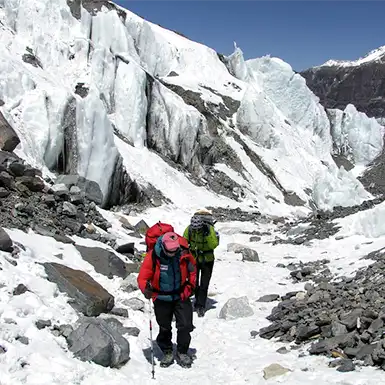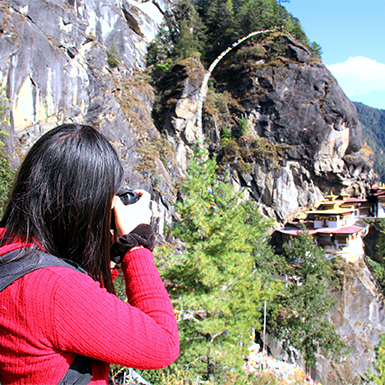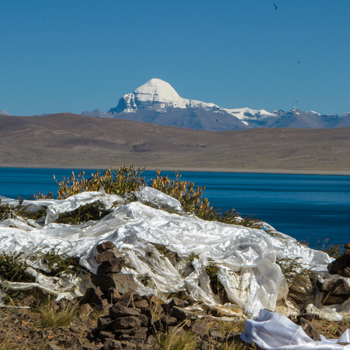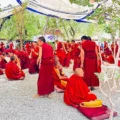Mount Everest, the world’s highest peak, lies on the border between Nepal and Tibet, presenting two distinct approaches to its famous base camps. While many trekkers choose the southern route from Nepal, the route to Everest Base Camp from the Tibetan side offers a unique adventure characterized by starkly beautiful landscapes. This guide highlights the Tibetan approach to Everest Base Camp, often called the North Face Base Camp. It provides essential details about the Tibet Everest Base Camp Trek, including information on Tibet Travel Permits for Everest, trekking experience from Lhasa to Everest Base Camp, and insights from a Tibetan Everest Base Camp Guide.
Choosing this route allows you to see Everest from a different perspective, known as the Everest North Face Base Camp. The rugged terrain and breathtaking vistas create an unforgettable experience. This article provides comprehensive, actionable guidance to equip you for your trek on the Tibetan side, ensuring you’re fully prepared for this exciting adventure.
Continue reading as we explore what makes the Tibetan route a distinct expedition and how to manage essential aspects such as travel permits, the trek path, and what to expect from this significant adventure.
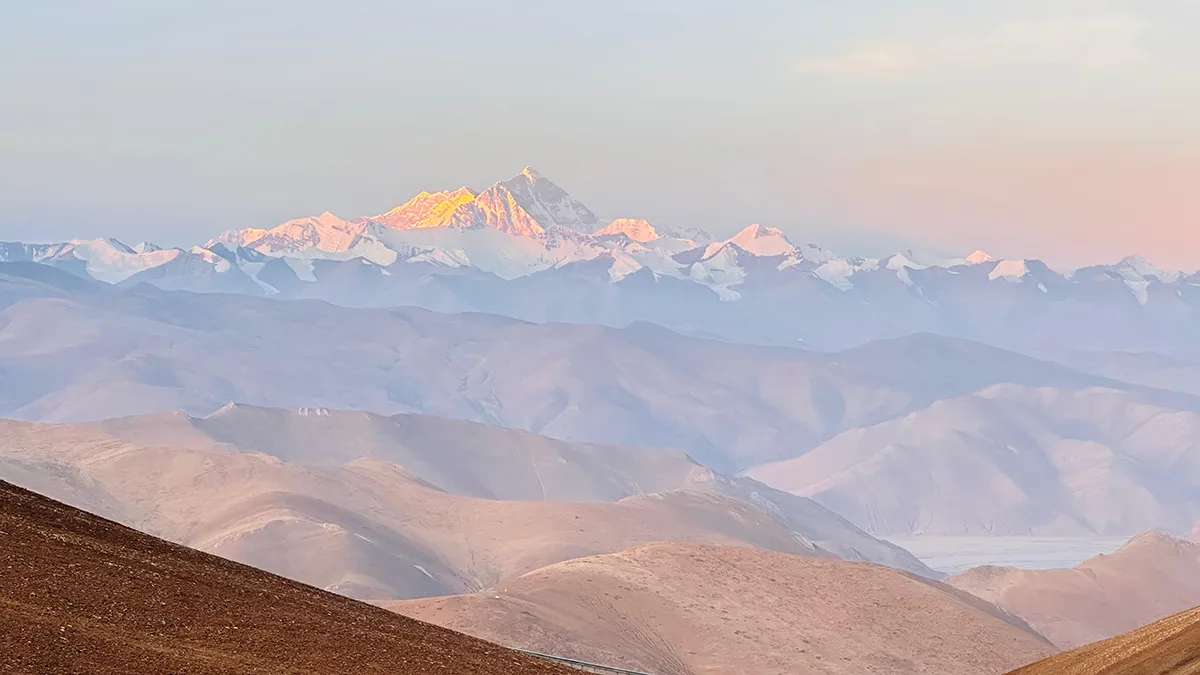
Gearing Up for Greatness: Preparations for Your Everest Base Camp from the Tibetan Side
Having explored the unique appeal of the Tibetan Everest Base Camp trek, let’s delve into the practicalities of preparing for this incredible adventure. Here’s a breakdown of the essential considerations to ensure a smooth and safe experience:
Essential Permits:
Obtaining the necessary permits is paramount for travel in Tibet. These typically include:
- Tibet Tourism Bureau Permit (PSB): This permit allows foreign tourists to enter Tibet. Since processing times could differ, apply as early as possible.
- Alien Travel Permit (AMS): This permit is required for all foreign visitors traveling outside major cities in Tibet, including the Everest Base Camp region.
Conquering the Elements: Choosing the Right Time
The ideal timeframe for your Tibet Everest Base Camp trek hinges on weather conditions. Here’s a breakdown of the two most favorable seasons:
- Spring (April-May): Spring offers comfortable temperatures, clear skies, and minimal rainfall, providing excellent visibility of Mount Everest. However, strong winds can be a challenge during this time.
- Autumn (September-November): Autumn boasts clear skies and pleasant temperatures, with less wind than spring. However, nighttime temperatures can drop significantly.
Packing for the High Frontier
The Tibetan climate and high altitude demand specific gear and preparations. Here’s a list of essentials to pack:
- Clothing: Consider packing layers of warm, breathable clothing, such as thermals, fleece jackets, and a waterproof outer shell. Remember a sturdy hat, sunglasses, and gloves.
- Footwear: Sturdy hiking footwear with supportive ankles is essential. If you want extra protection from snow and debris, consider gaiters.
- Altitude Sickness Prevention: Pack medication for altitude sickness, such as Diamox. Consult your doctor before your trip to discuss appropriate medication and dosage.
- Sun Protection: High altitude intensifies UV rays. Pack sunscreen with a high SPF (50+) and a wide-brimmed hat.
- Hydration: Staying hydrated is essential at high altitudes. Pack a refillable water bottle and consider electrolyte tablets to replenish minerals lost through sweat.
Additional Considerations:
- Physical Fitness: Acclimatization is crucial, while the trek may not be strenuous. Gradually increase your cardiovascular fitness and endurance in the months before your trip.
- Travel Insurance: Ensure your travel insurance plan includes high-altitude medical emergency coverage, which is vital for areas like Everest Base Camp. This coverage is crucial for addressing health issues during such challenging treks.
Bridging the Gap: Accessing Tibet for Your Everest Base Camp Trek
With secured permits and gear packed, you’re one step closer to your Tibet Everest Base Camp trek from the Tibetan Side. The next crucial step is reaching Tibet itself. Here’s a breakdown of the most common routes to access this awe-inspiring region:
Taking Flight:
Lhasa: The most popular entry point for the Everest Base Camp trek is Lhasa, the capital city of Tibet. Numerous international airlines offer direct flights to Lhasa Gonggar Airport (LXA) from major Asian cities.

Land Routes:
Overland from Nepal: For a more adventurous approach, consider an overland trip from Kathmandu, Nepal, to Lhasa. This multi-day trip offers stunning Himalayan scenery but requires additional permits and planning.
Important Considerations:
Foreigner Entry Restrictions: Tibet maintains stricter restrictions for foreigners than mainland China. Always check the latest regulations before booking your travel.
Travel Restrictions: Due to political sensitivities, some nationalities may face limitations on travel permits. Research visa requirements specific to your country.
Planning Your Route:
The most suitable entry point depends on your preferences and travel style.
Flying to Lhasa: This is the fastest and most convenient option, particularly for those focusing solely on the Tibet Everest Base Camp trek.
Overland from Nepal: This route allows you to combine the Everest Base Camp experience with exploring Nepal’s rich culture and scenery; however, it also factors in additional time and potential challenges associated with obtaining the necessary permits.
The Route to Everest Base Camp from the Tibetan Side
With permits secured, gear packed, and your chosen entry point into Tibet confirmed, it’s time to delve into the exhilarating trek to Everest Base Camp. This section provides a detailed breakdown of the route, highlighting key landmarks and stopovers along the way:
Lhasa to Shigatse:
Flying into Lhasa starts your adventure in Tibet’s captivating capital city. Take some time to explore historical and cultural treasures like the Potala Palace and Jokhang Temple before you head to Everest Base Camp. The trip from Lhasa to Shigatse, the second-largest city in Tibet, exposes you to the region’s unique culture and breathtaking landscapes.
Shigatse:
In Shigatse, engage with the vibrant atmosphere of Tashilhunpo Monastery, one of Tibet’s largest monasteries. This city also offers a crucial acclimatization point before you continue your ascent.

Gyantse (Optional Stop):
Consider a detour to Gyantse for those wanting deeper cultural immersion. This historic town is home to the impressive Kumbum Monastery, recognized as a UNESCO World Heritage Site.
Gawula Pass (5,190 meters):
Towering nearly 5,200 meters above sea level, Gawula Pass is a crown jewel on the journey towards Everest Base Camp. This scenic mountain pass offers panoramic vistas of the Himalayas, including the mighty Everest itself, Lhotse, Makalu, and Cho Oyu. Not only is it a photographer’s paradise, but Gawula Pass is also a culturally significant landmark, marked by colorful prayer flags that flutter in the wind.
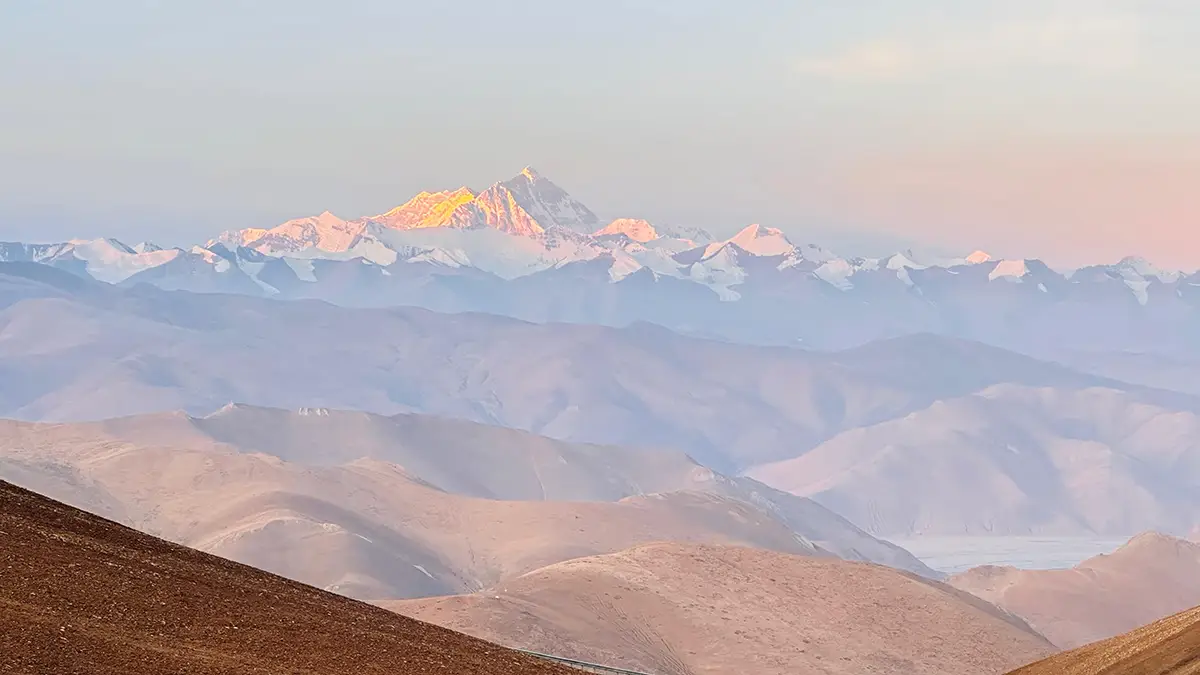
Rongbuk Monastery:
Cradled amidst the majestic peaks of the Himalayas, Rongbuk Monastery is the world’s highest-elevation monastery. Perched at a staggering 5,000 meters above sea level, it offers breathtaking views of Mount Everest’s north face and a spiritual sanctuary for Tibetan Buddhists. Founded in the early 20th century, Rongbuk Monastery features vibrant prayer halls adorned with intricate murals and houses a resident community of monks draped in traditional maroon robes.

Everest Base Camp (5,200 meters):
Congratulations! You’ve arrived at the pinnacle of your adventure — Everest Base Camp. Stand among towering peaks, including the awe-inspiring north face of Mount Everest. Take a moment to appreciate the scale and grandeur of this iconic mountain range, a defining moment for any avid traveler.
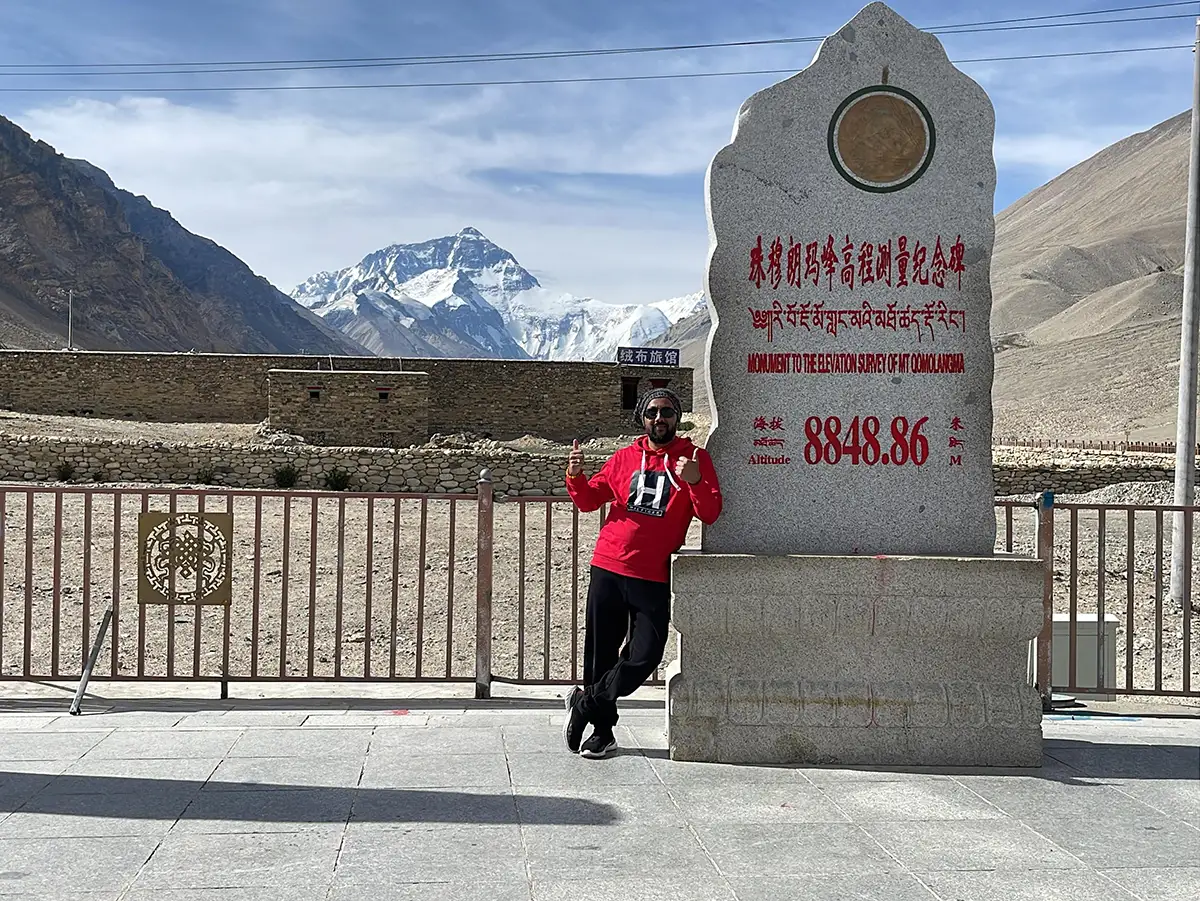
Additional Considerations:
While completing the trip from Lhasa to Everest Base Camp can take just a few days, remember to schedule acclimatization stops. A slower pace helps your body adapt to the high altitude, reducing the risk of altitude sickness.
Tour operators often offer various versions of the Tibet Everest Base Camp Trek, incorporating additional stops at scenic viewpoints or glaciers. Choose an itinerary based on your fitness level and interests.
Along the way, you will find various lodging options, from budget hostels to upscale hotels. Select your lodging according to your tastes and comfort requirements.
Cultural and Historical Gems on the Tibetan Everest Base Camp Trek
Trekking to Everest Base Camp from the Tibetan side offers cultural and historical immersion in addition to physical challenges. As you navigate the breathtaking landscapes, you’ll encounter a rich tapestry of Tibetan Buddhist heritage and the echoes of legendary expeditions.
A Trip Through Tibetan Buddhism:
- Lhasa: Your adventure begins in Lhasa, the heart of Tibetan Buddhism. Explore the impressive Potala Palace, originally the Dalai Lama’s residence, and the holy Jokhang Temple. Observe the colorful prayer flags waving in the breeze and the monks doing their daily activities.
- Monasteries Dotting the Landscape: The trip continues with visits to renowned monasteries like Gyantse’s Kumbum, a unique architectural marvel, and Sakya Monastery, known for its impressive collection of Buddhist scriptures. These monasteries stand as testaments to Tibet’s deep-rooted faith and artistic traditions.
- Rongbuk Monastery: The world’s highest monastery lies at the foot of Mount Everest. Witness monks living a simple life amidst the majestic surroundings, a powerful reminder of the spiritual significance of the Himalayas.
Footsteps of Everest Pioneers:
The Tibet Everest Base Camp trek also follows in the footsteps of legendary mountaineers. Early attempts on Everest’s north face used this route, including the historic 1975 British expedition that made the first successful ascent without supplemental oxygen.
A Blend of Adventure and Cultural Exploration:
Trekking to the Tibetan Everest Base Camp provides a unique fusion of adventure and cultural insight. As you ascend rugged terrain, you’ll learn more about Tibetan Buddhism and its close relationship to the magnificent Himalayas. This trek is a chance to test your physical limits while enriching your soul.
Challenges and Considerations
The allure of witnessing Mount Everest from its north face on a Tibet Everest Base Camp Trek is undeniable. However, this adventure has inherent challenges that require careful planning and preparation.
Battling the Highs: Altitude Sickness
Altitude sickness is the most significant hurdle on the Everest Base Camp trek from the Tibetan side. Even though Everest Base Camp sits at a relatively “low” 5,200 meters, thin air can cause headaches, nausea, and fatigue. Here are some strategies to combat altitude sickness:
- Gradual Ascent: Acclimatization is critical. Most itineraries include rest days in Shigatse (3,900 meters) and Lhasa (3,650 meters) to give your body time to acclimate to the lower oxygen levels.
- Listen to Your Body: Ascend slowly and be mindful of your body’s signals. Headaches and dizziness are early signs of altitude sickness. If symptoms worsen, descend immediately.
- Hydration is Essential: Drink plenty of fluids throughout the trek to stay hydrated and aid acclimatization.

Logistical Considerations:
While breathtaking scenery abounds, the Tibetan Everest Base Camp Guide also presents logistical challenges:
Transportation: The trip involves a combination of flights and overland travel on paved roads and rough terrain. Be prepared for bumpy rides, especially on the approach to Everest Base Camp.
Accommodation: Accommodation along the route varies. Expect a mix of hotels in larger towns, guesthouses, or basic tents at higher altitudes.
Tourism and Environmental Impact on the Tibet Everest Base Camp Trek
The allure of Everest Base Camp from the Tibetan side is undeniable, but tourism can impact the fragile Himalayan ecosystem. Here, we explore this balance and how you, as a responsible traveler, can minimize your environmental footprint.
The Impact of Visitors:
The increasing popularity of the Tibet Everest Base Camp Trek has led to concerns about waste management, pollution, and strain on local resources. Large volumes of trash generated by trekkers can mar the region’s pristine beauty.
Sustainable Practices for Eco-Conscious Travelers:
- Minimize Waste: Avoid single-use plastics and bring just minimal items. Purchase reusable water bottles and make the switch to biodegradable personal hygiene products.
- Respect Local Customs: When visiting monasteries, be mindful of cultural sensitivities and dress modestly.
- Support Local Communities: Choose tours operated by responsible companies that employ local guides and porters, contributing to the local economy.
- Leave No Trace: Always practice responsible waste disposal and minimize your impact on campsites and trails.
Personal Stories and Insights on the Everest Base Camp from the Tibetan Side
The allure of Everest Base Camp from the Tibetan Side transcends breathtaking scenery. It is a trip that leaves a lasting impression on those undertaking it. Here, we weave together personal stories and expert insights to provide a glimpse into what awaits you:
Trekker Testimonials:
“The first glimpse of Everest’s north face was breathtaking. It’s a humbling experience that puts the power of nature into perspective in a real way.” – Sarah M., a traveler from California.
“The camaraderie on the trek was unreal. Sharing yarns and battling through challenges with fellow adventurers from all over the world created memories that’ll stick with me forever.” – David L., a traveler from Australia.
” Llegar al campamento base del Everest se sintió como una cumbre personal. La sensación de logro y las vistas impresionantes hicieron que todo valiera la pena.” – Maria S., a traveler from Spain.
Insights from Local Guides:
“Acclimatization is key. “Take your time, monitor your health, and enjoy the breathtaking scenery as you travel,” advises Pemba, an experienced guide for Everest Base Camp in Tibet.
“The local people are incredibly hospitable. Embrace the opportunity to experience Tibetan culture and traditions.” – Yangchen, a local guide from Shigatse.
“The night sky at Everest Base Camp is unlike anything you’ve ever seen. The abundance of stars and the Milky Way are mesmerizing.” – Tenzin, a Tibetan astronomy enthusiast and guide.
Expert Tips:
These quotes highlight the importance of acclimatization, cultural immersion, and trip enjoyment. Here are some additional tips from Everest Base Camp experts:
Prepare physically: While the trek isn’t strenuous, building your endurance beforehand will enhance your experience.
Pack strategically: Focus on warm, breathable clothing, layers, and proper footwear for Tibet’s high altitudes.
Embrace the challenge: Altitude sickness can occur. Listen to your body, stay hydrated, and descend if needed.
Be a responsible traveler:
- Minimize trash.
- Show respect for the indigenous culture.
- Leave no trace on the mountain.

Scaling the Challenge: Conquering Everest Base Camp from the Tibetan Side
The mystique of Everest Base Camp transcends borders, but approaching it from the Tibetan side offers a unique adventure unlike any other. This guide pro with the necessary knowledge to navigate this fantastic trip successfully. Here’s a final recap of the distinct aspects of a Tibet Everest Base Camp trek:
- Witnessing the Colossus: Marvel at the awe-inspiring north face of Mount Everest, a view not seen from the Nepalese side.
- Cultural Tapestry: Explore vibrant Tibetan Buddhist traditions, from prayer flags fluttering in the wind to serene monasteries scattered across the landscape.
- Footsteps of Legends: Trace the paths of pioneering mountaineers who made the first summit attempts via the north face.
- Accessibility with a Challenge: Enjoy a relatively smooth trip for much of the trek, with opportunities for brief acclimatization hikes.
A Call to Adventure Awaits
Are you prepared to answer Everest’s call? Here are some final words of encouragement and advice:
Planning is Paramount: Ensure you secure your Tibet Travel Permits for Everest well ahead of time, particularly during the busy spring and autumn seasons. Consider partnering with a reputable Tibetan Everest Base Camp Guide to manage logistics and guarantee a seamless experience.
Conquer the Altitude: Emphasize gradual acclimatization. Pay attention to your body, prioritize rest, and prepare to address potential altitude sickness.
Embrace the Challenge: The trek demands both physical and mental toughness. However, the rewards—stunning vistas, personal achievements, and cultural encounters—are undoubtedly worth it.

